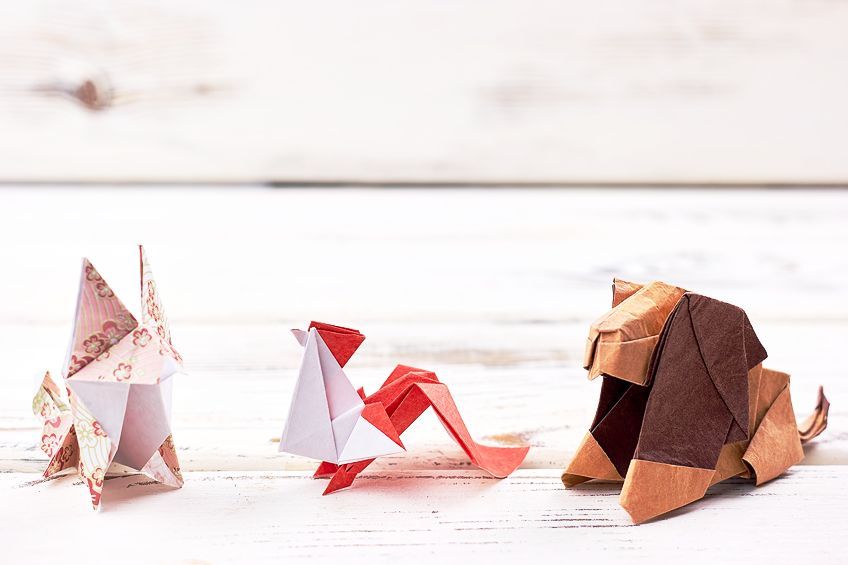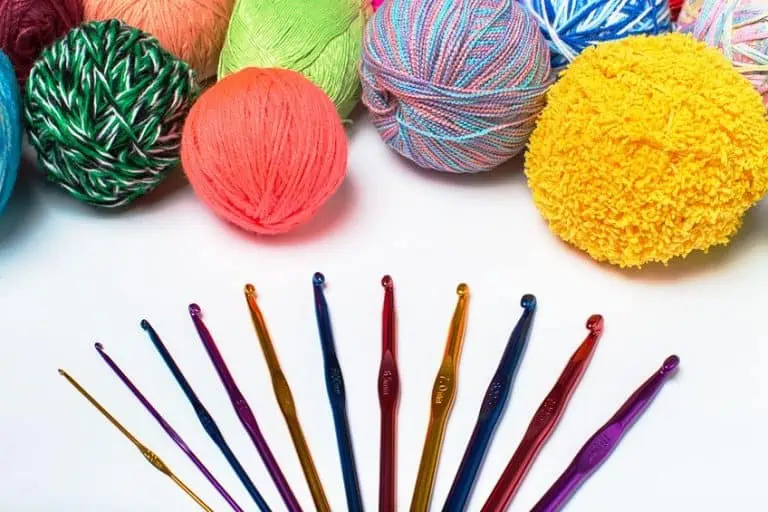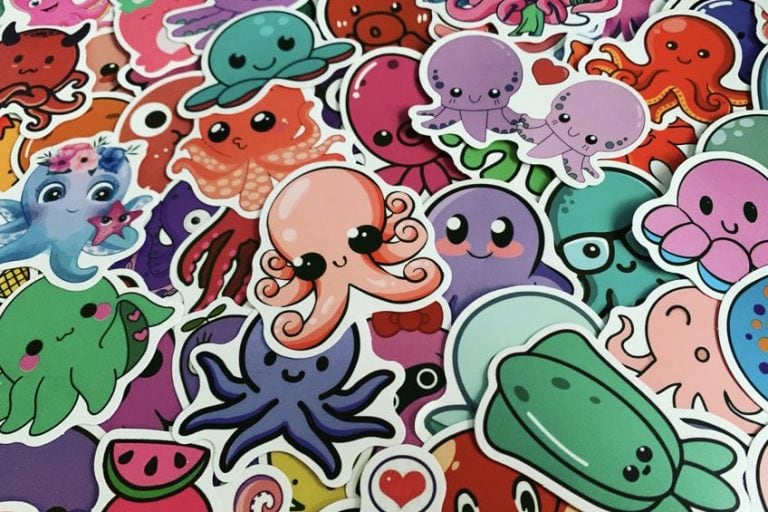What Is Origami? – Exploring the Art of Japanese Paper Folding
This post may contain affiliate links. We may earn a small commission from purchases made through them, at no additional cost to you.
What is origami, and is origami an art? Origami is a traditional Japanese paper-folding art form. In this article, we shall find out about the history of origami and the origami meaning. We will also answer your origami-related questions such as, “who created origami?”, and “what is origami paper used for?”. Keep on reading below to learn more about this fascinating art form.
Table of Contents
What Is Origami?
In present-day usage, the term “origami” is widely employed to refer to any paper-folding art, regardless of its culture of origin. The objective is to use various folding techniques to transform a normal, everyday flat sheet of paper into a completed and beautiful artwork. Cuts, glue, or marks on the paper are typically frowned upon by modern origami practitioners. Origami folders usually use the Japanese word kirigami when referring to cut-out works of art. The few basic folds in origami can be combined in numerous ways to create various complex designs.
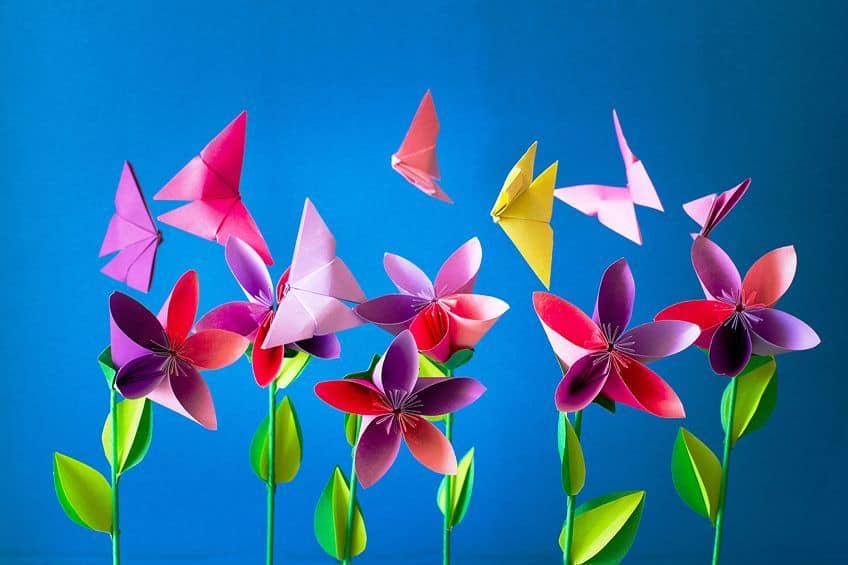
The History of Origami Art
Paper had been introduced from China to Japan via the Korean Peninsula by the 7th century, and the Japanese created washi in the Heian era by perfecting the process of creating paper. The paper production technique established in Japan in about 805 involved the addition of mucilage to the usual technique for creating a stronger layer of paper fibers. With the advancement of Japanese papermaking technology and the wide availability of paper, folded paper came to be used for religious ceremony decorations and tools.
These religious paper decorations and the manner presents were wrapped in folded paper grew to become stylized and recognized as ceremonial origami.
The Imperial court created a rule of etiquette for packaging money and objects used in ceremonies using folded paper during the Heian period, as well as a code of etiquette that defined how gifts should be wrapped. Various types of decorum were established by the Ogasawara and Ise clans throughout the Muromachi era, from the14th to 15th centuries, completing the pattern of Japanese folded-paper decorum that endures right up to today.
The Basics of Origami Art
Let us start with the basics of origami art. This includes finding out about origami paper, in addition to the common techniques used. We will also look at popular origami symbols.

What Is Origami Paper?
The sole prerequisite for folding is that the material be flat and able to retain a crease. Prepackaged pieces of various sizes of origami paper are available. It is usually colored on the one side and white on the reverse; however, dual-colored and patterned variants are available and may be utilized efficiently for color-changed models. Because origami paper weighs somewhat less than copy paper, it is appropriate for a larger range of models. For basic folds like the waterbomb and the crane, regular copy paper can be utilized. Wet-folding heavier-weight papers is also possible.
This process makes a more rounded sculpting of the sculpture possible, which when dried becomes hard and solid.
As the name indicates, foil-backed paper is a piece of thin foil attached to a layer of thin paper. Tissue foil, which is manufactured by gluing a small sheet of tissue paper on household aluminum foil, has similarities to this. A tissue/foil/tissue sandwich may be made by gluing a second piece of tissue to the back side. Tissue foil is not commercially available; it must be manufactured from scratch. Both foil materials are appropriate for intricate models. Washi is a traditional Japanese origami paper. Washi is harder than regular paper created from wood pulp and can be used in many kinds of traditional handicrafts. Washi is traditionally prepared from the gampi tree bark, the mitsumata shrub, or the paper mulberry, although it can also be created from hemp, bamboo, rice, or wheat.
Folding Techniques
Aside from the more popular still-life origami, there are also designs for moving origami. Action origami is defined as origami that flies, needs inflation to be finished, or, once completed, employs the kinetic energy of an individual’s hands applied to a specific place on the model in order to move another limb or flap. Some contend that only the latter is properly recognized as action origami. Action origami, which began with the traditional flapping bird, has become highly popular. Robert Lang’s instrumentalists are one instance; when the heads of the figures are lifted away from their bodies, their hands move, mimicking the music playing.

Modular origami requires assembling several identical components to make an overall shape. Individual elements tend to be easy, but the final assembly can prove challenging. Several modular origami models, such as kusudama, are decorative folding balls that deviate from the more traditional origami in that the components may be bonded together with glue or thread. A related form of origami, Chinese paper folding, features a similar method called golden venture folding, in which enormous numbers of pieces are assembled to construct complex sculptures. The term “3D origami” refers to this approach. As opposed to using geometrically straight folds and flat surfaces, models with smooth curves can additionally be made using the wet-folding process.
The paper is wet so that it may be readily shaped; the finished object retains its shape after drying.
It may be used to create extremely realistic animal models, for example. An adhesive that is rigid when dry yet can dissolve in water when wet, turning soft and pliable, often gets applied to the paper, either during the pulp stage or on the outer layer of a sheet of paper. Pureland origami stipulates that only basic mountain/valley folds are allowed to be utilized and that every fold must have evident placements. It was created in the 1970s by John Smith to assist unskilled folders or those with vulnerable motor abilities. Some designers like the challenge of working under extremely limited parameters.
Advanced Folding Techniques
The growing popularity of origami tessellation surged after the year 2000. A tessellation is defined as a group of figures that fill a plane without overlaps or gaps. In origami tessellations, pleats are typically utilized to link molecular pieces, such as twist folds, in a recurring way. The very first person to investigate twist-fold tessellations in any systematic fashion throughout the 1960s was Shuzo Fujimoto, who produced hundreds of designs and put the genre in the origami mainstream. Ron Resch patented various tessellation designs around the same time as part of his research into kinetic sculpture and developable surfaces, however, his artwork wasn’t acknowledged by the origami world until the 1980s.

Chris Palmer studied tessellations extensively after viewing the Zilij patterns at the Alhambra and has discovered techniques to make intricate origami tessellations out of silk. Two designers, Alex Bateman, and Robert Lang, employ computer programs to make origami tessellations. The first international conference dedicated to origami tessellations was held in Brazil in 2006, and Eric Gjerde produced the first instructional book on how to create tessellation folding patterns in 2008. Since then, the field has expanded rapidly. Kirigami is a word that means “paper cutting” in Japanese. Cutting was often utilized in traditional Japanese origami, however, modern technological advances have rendered certain cuts obsolete. Most contemporary origami designers nowadays don’t regard models with cuts as true origami, instead calling these works Kirigami. This shift in mindset happened in the 1960s and 1970s, thus early origami publications frequently incorporated cuts, but they have mostly vanished from the current origami repertory; most recent books lack any reference to cutting. Strip folding can be thought of as a hybrid of weaving and paper folding.
The Lucky Star is regarded as a popular example of strip folding. The Moravian Star is another popular fold that is constructed by strip folding in a 3-dimensional shape that is comprised of 16 spikes.
Tiny van der Plas, a Dutch artist, is credited with inventing teabag folding in 1992 as a papercraft skill for adorning greeting cards. It employs small squares of symmetrical paper that are folded in such a manner that they interlock and create a three-dimensional replica of the underlying pattern. The fundamental kite fold is used to create rosettes that are a three-dimensional variant of the two-dimensional pattern. The basic rosette pattern calls for eight similar squares folded into a ‘kite’ shape. The designs are highly beneficial for mathematics teachers as a practical means of illustrating some basic symmetry characteristics.
Origami Models
There are both traditional and contemporary models to choose from when making origami. While many people prefer to stick to the original models, there are modern artists who have come up with unique and innovative models. Let’s start with the traditional models.
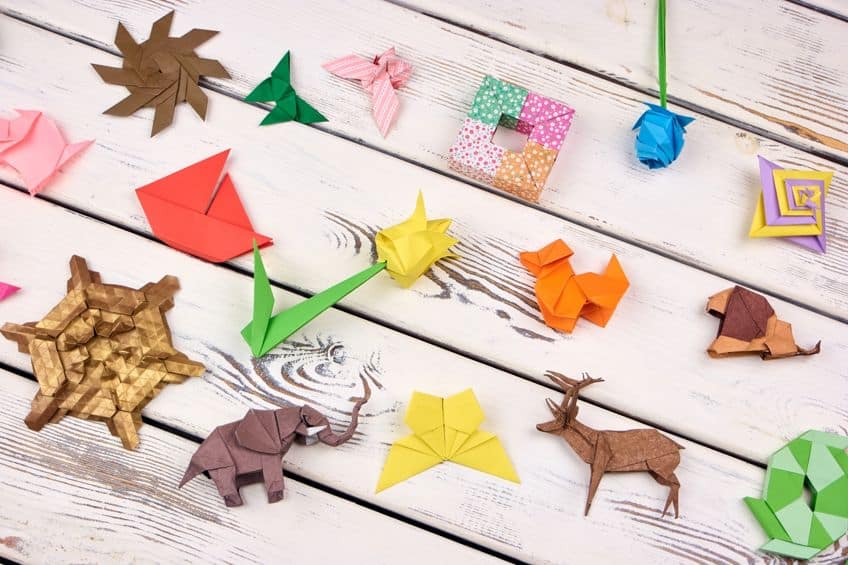
Traditional Origami Models
These traditional origami models have been folded by numerous people throughout history and act as a starting point for learning and practicing origami. They are excellent places for novices to start developing their folding abilities and grasp of origami fundamentals. Many different kinds and variations of these forms have arisen over time, offering greater personal creativity and artistic expression within the conventional framework.
One of the most famous and well-known origami patterns is the crane, which is referred to as the “tsuru” in Japanese.
It is revered in Japanese culture and is connected with tranquility, longevity, as well as good fortune. Creating a thousand origami cranes is believed to fulfill a wish or give good luck in Japanese mythology. The crane, with its exquisite design, may be made by folding a square sheet of paper. The origami frog is a popular model due to its interactive nature. It is popular with both youngsters and adults since it can be made to leap by pressing down on its back.

The frog’s folding process entails making particular folds to make the head and legs of the frog. It’s a colorful and amusing model that also demonstrates origami’s ingenuity. The origami boat is a basic yet elegant creation that looks like a little watercraft. It is fashioned from a square piece of paper and can be folded quite quickly. The boat design explains how to employ simple folds and how a few selective creases can change a flat piece of paper into a three-dimensional object. The boat is a common starting model that may be used as a foundation for more complicated origami projects.
Contemporary Origami Models
Modern origami models can often be more complex and elaborate than traditional ones, necessitating a greater degree of ability and expertise. They demonstrate the growth of origami as an art form as well as the innovative mindset of contemporary origami artists. These models usually push the bounds of traditional origami, adding exceptional detailing along with complex folding processes.
The Kawasaki Rose, designed by Toshikazu Kawasaki, is an extremely elaborate origami model that resembles a genuine rose.
The complex leaves and petals are made by folding numerous layers of paper. The Kawasaki Rose is renowned among expert origami aficionados due to its attractiveness. Origami artists of today have created models influenced by insects such as beetles, butterflies, dragonflies, and others. These models frequently display the insects’ exquisite details, implementing complicated folding techniques to reproduce their forms and traits. Origami fans have also drawn inspiration from popular culture, creating origami models based on cartoon, movie, and video game characters. Characters such as Yoda and Pikachu, for instance, may be found as origami models. These creations combine recognizable figures with the technique of paper folding to illustrate the integration of origami and pop culture.
Mathematical Origami
The practice and study of origami encompasses a number of mathematical topics. For example, the subject of whether a crease pattern is able to be folded into a two-dimensional model has received a great deal of mathematical attention. Several technical improvements have resulted from insights gained via paper folding. Techniques for deploying automobile airbags and stent implantation from a folded state, for instance, have been devised. The challenge of rigid origami is very practical. The Miura map fold, for instance, is a hard fold that has been used to install enormous solar panel arrays for space spacecraft.
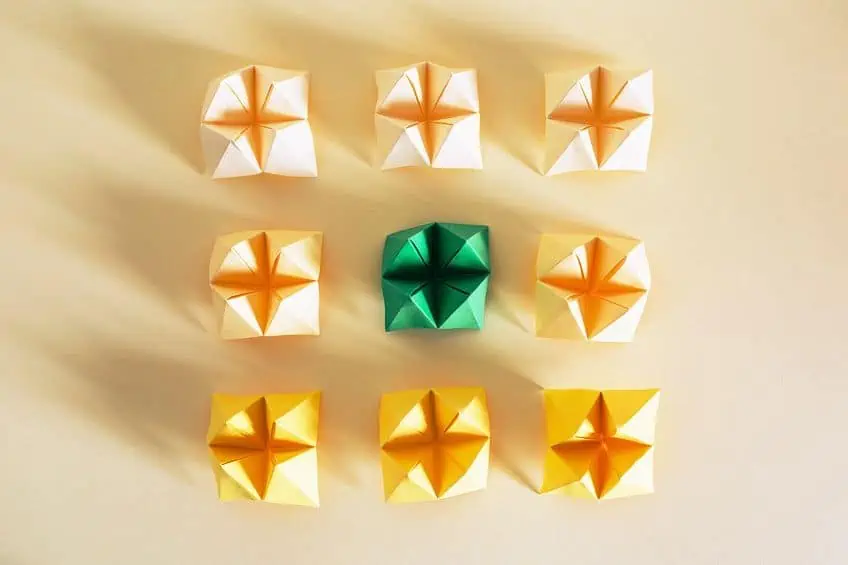
The Benefits of Making Origami
Of course, the most obvious benefit of making origami is the wonderful objects that are left when completing a project. However, every step of making origami is actually beneficial for you. Making origami can be a relaxing and peaceful exercise. Focusing on the exact folds and motions necessary in origami can assist in shifting attention away from unpleasant thoughts and promoting relaxation. The repetitive nature of folding could prove relaxing, enabling you to relax and decrease stress. Origami includes precise paper folding and manipulation, which improves hand-eye coordination.
Fine motor skills and dexterity are developed as you fold and construct complicated shapes.
This is especially good for youngsters since it helps them develop their coordination and hand muscles. Making origami fosters planning, logic, and problem-solving skills. Each fold necessitates knowing and following a set of processes. Origami may help you improve your spatial thinking, visualization skills, and geometric knowledge. Attempting increasingly difficult origami models may also improve your patience, tenacity, as well as your capacity to break down complex jobs into smaller steps.

Making origami additionally allows for creativity and self-expression. To personalize your designs, explore different paper colors, textures, and sizes. Origami involves paying special attention to detail, cultivating a sense of awareness as you actively engage in the folding process. It enables you to disengage from unnecessary distractions and focus entirely on the current moment. Origami can serve as a useful teaching tool, especially in disciplines such as math and geometry. Students can acquire a greater knowledge of topics such as angles, symmetry, and dimensions by folding in a hands-on and visual approach.
Common Mistakes When Making Origami
When the folds of your origami model do not line up properly, the outcome is a skewed or asymmetrical model. This might occur if the folds are not set correctly or if the paper moves throughout the folding process. In order to prevent misalignment from occurring, line the corners and edges exactly and produce sharp and clean creases using your fingers. For a clean and sturdy origami model, precise and well-defined creases are essential. Creasing errors could end up resulting in a floppy structure.
Partial or shallow creases, folds that fail to reach the intended places, or creases that are excessively strong and cause the paper to rip are all examples of common crease accuracy errors.
Take your time to make sure your creases are crisp, even, and in the right location. Origami paper can become fragile, particularly when folding detailed or complicated shapes. Excessive force or careless handling of the paper might result in rips or damage. Try and handle the paper gently to avoid ripping, especially when doing elaborate folds or working with numerous layers. You should also consider selecting a thinner or more durable paper fit for the model if the paper seems flimsy or prone to ripping. Reverse folds can be difficult to master, especially for novices.
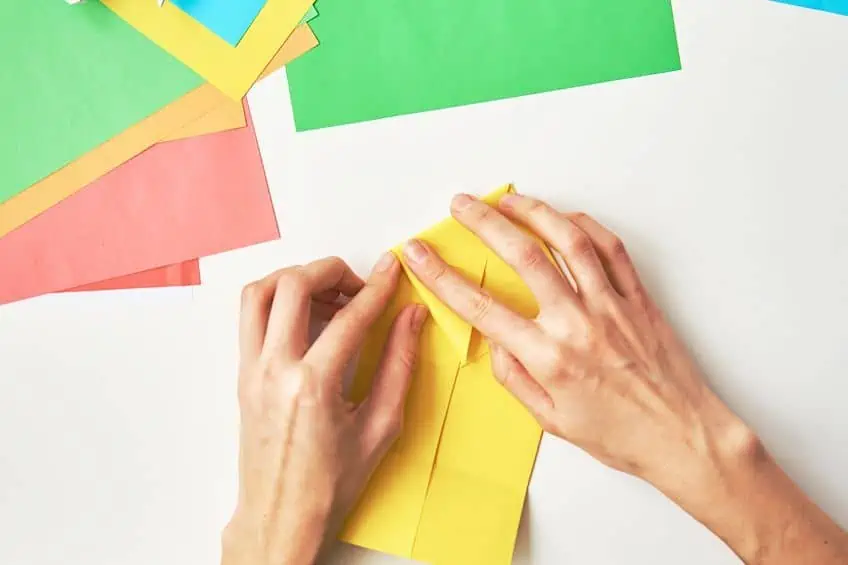
They require folding the paper in such a way that a section is tucked inside and a new crease is formed. Confusion over the way to fold or poorly aligning the edges are two common problems with reverse folds. Before trying a reverse fold, pay great attention to the directions or pictures and ensure you comprehend the correct way to do it. Folding the model in the wrong way might lead it to seem inverted or flipped. This error tends to occur when following illustrations or directions that do not expressly state which way to fold. Before continuing, carefully review the illustrations and make sure you’re familiar with the intended fold direction. To avoid inadvertent flips or inversions, double-check the orientation of your folds.
Troubleshooting Difficult Models
Before starting, carefully check the model’s instructions or schematics to ensure you understand each step. If you’re having trouble with a complicated model, try practicing with smaller designs to hone your abilities and get more comfortable with folding procedures. Visual tutorials can offer more detailed instructions for difficult models or folds.
Analyze the model’s most challenging element and divide it into smaller parts.

Take your time and concentrate on taking one step at a time. If you find the model too difficult, consider using a larger piece of paper that will make the folding process a little bit easier. Keep in mind that learning origami involves making mistakes, which are inevitable. There is no rush, take your time, be patient with yourself, and savor the process of folding. You’ll improve your skills and make lovely origami designs with time and effort.
That covers our look at the origami meaning and history. For many centuries, nations have devised inventive methods to approach, accept, and modify the paper craft. Though most frequently associated with Japan, origami has roots in Europe and China as well. Traditional origami involves folding a single square sheet of paper into a work of art without cutting, gluing, taping, or even labeling it. In the sixth century, paper was brought to Japan. Paper folding evolved as a ceremonial Shinto rite during this time period. Origami was not considered a leisure pastime or an art form until Japan’s Edo Period. Since then, it has grown into a favored art form around the world!
Take a look at our origami webstory here!
Frequently Asked Questions
Is Origami Art?
Yes, it is most definitely regarded as an art form. It takes a lot of time and skill in order to create a proper origami model. Many artists are able to create incredible works simply using the art of origami. While it may be simple enough to get into, mastering origami can prove to be very challenging to anyone, but it is well worth the effort of learning.
Who Created Origami?
Paper is a frail material that fails to last well over extended periods of time, hence the precise beginnings of origami are unknown to modern scholars. The art of paper folding, on the other hand, has been practiced for millennia and is believed to have begun in ancient China and Japan. During the second century CE, the development of paper in China offered a medium for creative expression, particularly paper folding. Creating forms and things for ceremonial reasons, such as offerings and decorations, was a part of several early Chinese paper folding customs. However, the specific people involved with the invention of origami in China are unknown to us today.
In 2005, Charlene completed her wellness degrees in therapeutic aromatherapy and reflexology at the International School of Reflexology and Meridian Therapy. She worked for a company offering corporate wellness programs for several years before opening her own therapy practice. In 2015, she was asked by a digital marketer friend to join her company as a content creator, and it was here that she discovered her enthusiasm for writing. Since entering the world of content creation, she has gained a lot of experience over the years writing about various topics such as beauty, health, wellness, travel, crafting, and much more. Due to various circumstances, she had to give up her therapy practice and now works as a freelance writer. Since she is a very creative person and as a balance to writing likes to be active in various areas of art and crafts, the activity at acrylgiessen.com is perfect for her to contribute their knowledge and experience in various creative topics.
Learn more about Charlene Lewis and about us.
